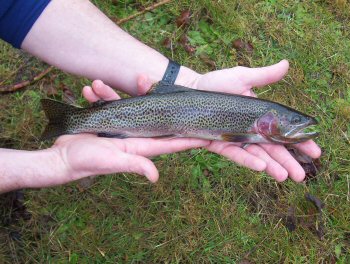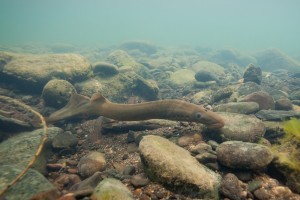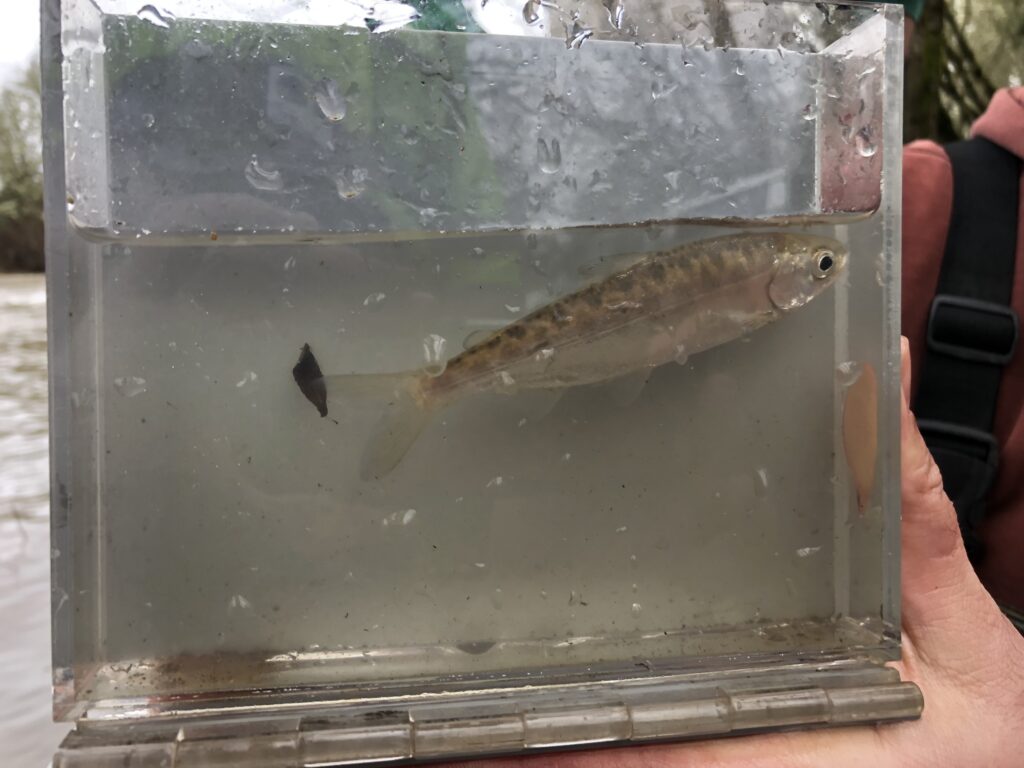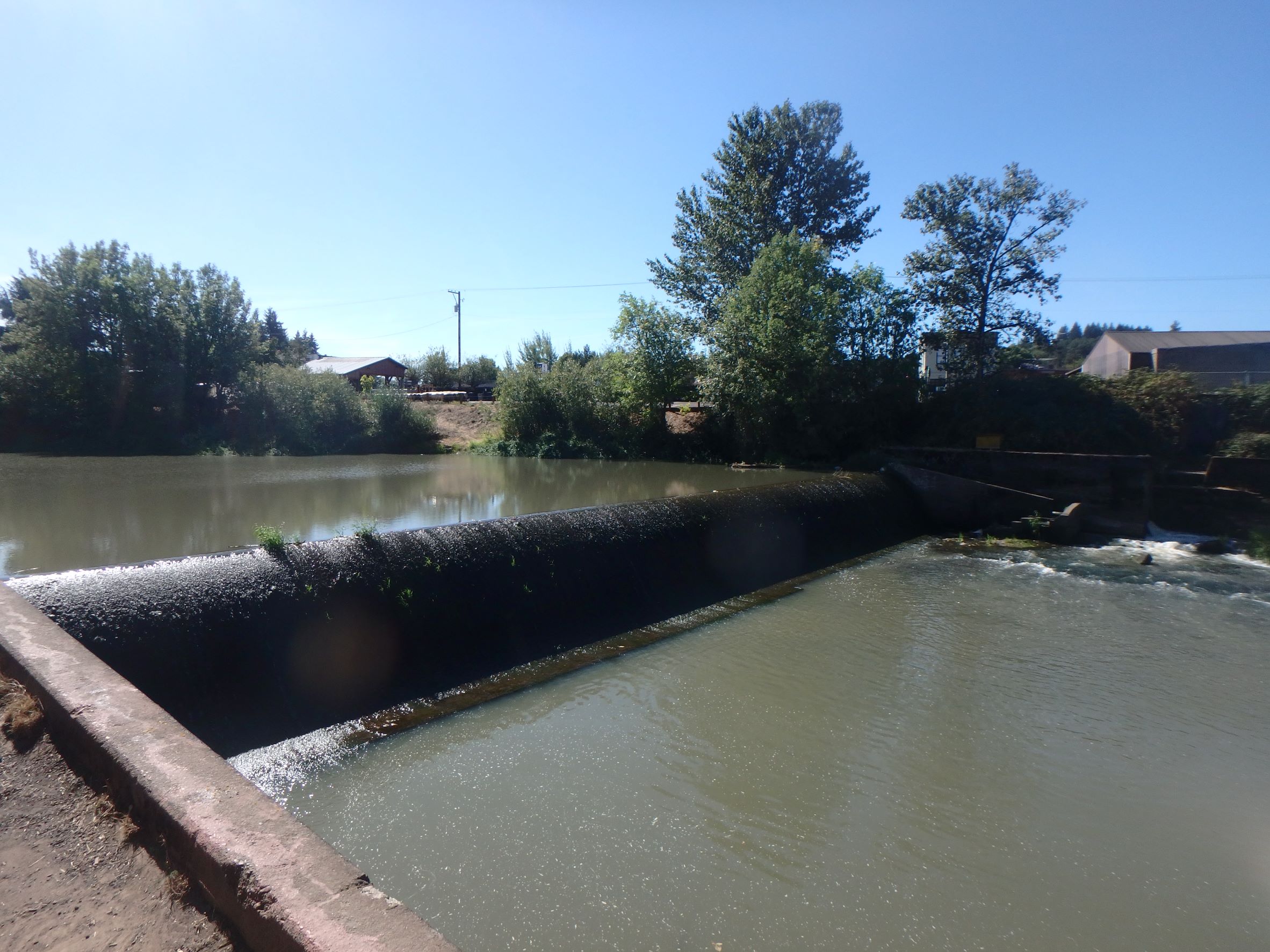Hosted by Corps of Engineers
Wednesday, November 3rd, 4 – 5 p.m.
Online only via WebEx
Nov 3rd Corps public meeting at 4 p.m.
All info can also be found here on the Army Corps webpage.
- Meeting Link – **CLICK TO JOIN HERE**
- Call: 1-844-800-2712 (US) (Call-in toll-free number)
- Access Code: 2762 496 5934 #
- Password: jaSHTZa$633

Hello watershed friends and interested folks – After many years we have finally made it to the point in the effort for Long Tom River fish passage where the public scoping meeting on the Monroe drop structure will be held. The barrier at Monroe is the first fish encounter as they migrate up from the Willamette River. The meeting will be hosted by the Corps of Engineers and partners for the Long Tom River Ecosystem Restoration project.
Our request now is that you attend that public meeting virtually on Nov 3 at 4:00 pm to learn and ask questions. There is a further invitation to submit written comments within 30 days of the meeting. We hope you can support the project for the health of the Long Tom River, especially fish passage, and especially a solution that brings the river back to the most natural state possible, for fish passage at the widest set of conditions, and with the lowest ongoing costs for the sponsors.
Thank Yous
Thank you to the Corps of Engineers Willamette Valley Operations staff – many of you know Erik Petersen and Wendy Jones, and have worked with Cam Bishop and other great staff previously. Thank you to the Portland District team that is specific to and leading this 1135 project – you will meet Sarah Knowles and Kat Herzog on the virtual public meeting.
Thank you to the City of Monroe for their co-sponsorship, leadership and consistent support for this project for more than 5 years (and partnership on other projects!).
Thank you to the Confederated Tribes of Siletz Indians for being an essential, valuable and generous co-sponsor for this project and a consistent guide and partner for many years.
Reminder of background and previous meetings

Addressing barriers to fish passage was identified as a priority in the Watershed Assessment in 2000. Addressing the barriers of the Corps structures has been an effort of many partners in the watershed culminating in a letter from the City of Monroe to the Corps in 2016 to request a look at the Monroe drop structure under the 1135 CAP funding authority for ecosystem restoration. LTWC received grants from the Oregon Watershed Watershed Enhancement Board, the Open Rivers Fund – a fund of the Resources Legacy Fund supported by The William & Flora Hewlett Foundation, and many watershed donors to look at mainstem river fish barriers, habitat reconnection, and improved maintenance practices. LTWC hosted public meetings, tours and surveys in the Monroe area from 2015-18 with the help of a project steering committee of landowners, City officials and watershed residents while simultaneously working with key partners at a technical level. Due to the incredible collaboration and wide community support for fish passage at Monroe, two successive Corps Colonels supported the project and we were thrilled to get one of only two project-starts in the nation when it was approved in 2019.
There are many measures we can take to address the fish passage barrier this drop structure at Monroe presents. Importantly, we can do so without increasing flooding, where it is not wanted by the City or landowners, because this is a run-of-river dam (not a water storage dam). We can also improve fish passage without negatively affecting the City water intake upstream. There will even be opportunities, mainly alongside the project, to improve conditions for City water quality, habitat in the City park area, and access to recreation, cultural knowledge, and views and engagement with the river.
The project connects with multiple existing plans for conservation, City of Monroe parks, Riverside District, and water system. It also fits with the vision and goals for an increasingly well-functioning river system from a natural and cultural perspective. This project complements other efforts of the City, LTWC and multiple Tribes and Tribal Nations in this area.
We hope to see you at the virtual meeting, and hear from you in comments to the Corps!
Virtual Meeting tips

WebEx is a secure platform used by the Corps. Be early if you can (virtual room opens ~15 minutes early). Use the link and have the meeting ID from the invitation. Using a screen is best to see the presentation but there is a call-in option. You can download the WebEx app or join in browser. Either way you’ll sign in as a guest. Please make sure to mute yourself. You’ll be able to ask questions in the chat. Perhaps make sure your browser is updated, and computer updated and restarted, to lessen potential technical issues.
If you can’t make it – slides will be posted afterward, likely at the same Corps website. LTWC and the City of Monroe will also post them.
Please submit any comments on the project in writing. Ideally, submit them to the Corps directly although LTWC or the City can also forward them for you. Email: NWP-LongTom-EcoRes@usace.army.mil
__________________
Corps Fern Ridge and Long Tom River Website
All questions can only be answered “officially” by the Corps for this project. The sponsors and LTWC can offer perspective and discussion, and sometimes will know the official answer because it’s been discussed.
Corps, 503-808-4510
Dana @ LTWC office, 541-654-8965

